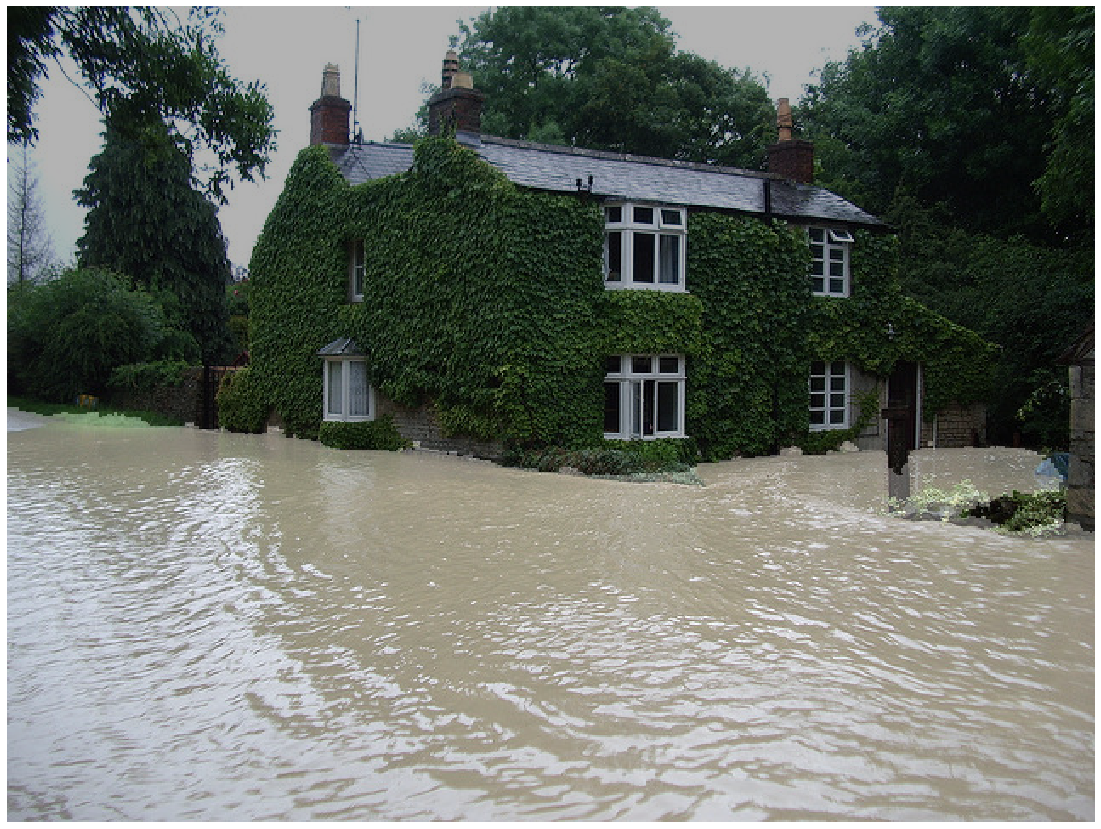This is an unofficial PyTorch modification of DeepLab v2 with a ResNet-101 backbone. Most of the code has been taken from this repository: kazuto1011/deeplab-pytorch
We use their model trained on COCO-Stuff 164K dataset and merged some labels to output a binary mask of water.
Merged labels:
- water-other
- river
- sand
- sea
For more info on how we selected this model one should look at this thread: cc-ai/kdb/issues/62
Evaluating on our dataset of manually annotated 210 images of flood, without the CRF post processing, results appear very good, the mean IOU is about 79% with some example that totally fail.
A good way of using it would be to process our entire dataset and remove manually every image with less than 50% of water covered. If we do that post evaluation on the 210 images, we keep 88 % of them and increase the IOU to 86%. Further filtering could be done..
Here is an example of a good segmentation.
CRF should increase the performance but is slower at inference time (9s/it vs several it/s).
Pretrained model is provided here: deeplabv2_resnet101_msc-cocostuff164k
- Python 2.7+/3.6+
- Anaconda environement
Then setup from conda_env.yaml. Please modify cuda option as needed (default: cudatoolkit=10.0)
$ conda env create -f configs/conda_env.yaml
$ conda activate deeplab-pytorchUsage: demo.py single [OPTIONS]
Inference from a single image
Options:
-c, --config-path FILENAME Dataset configuration file in YAML [required]
-m, --model-path PATH PyTorch model to be loaded [required]
-i, --image-path PATH Image to be processed [required]
--cuda / --cpu Enable CUDA if available [default: --cuda]
--crf CRF post-processing [default: False]
--help Show this message and exit.
Usage: demo.py test [OPTIONS]
Inference from a single folder
Options:
-c, --config-path FILENAME Dataset configuration file in YAML [required]
-m, --model-path PATH PyTorch model to be loaded [required]
-i, --folder-path PATH Folder of images to be processed [required]
-o, --output-path PATH Folder to store results [required]
--cuda / --cpu Enable CUDA if available [default: --cuda]
--crf CRF post-processing [default: False]
--help Show this message and exit.
Example:
python demo.py test -c ./configs/cocostuff164k.yaml -m ./deeplabv2_resnet101_msc-cocostuff164k-100000.pth -i ./Dataset/flood_dataset/ -o ./output/predicted_crf/ --crf
-
L.-C. Chen, G. Papandreou, I. Kokkinos, K. Murphy, A. L. Yuille. DeepLab: Semantic Image Segmentation with Deep Convolutional Nets, Atrous Convolution, and Fully Connected CRFs. IEEE TPAMI, 2018.
Project / Code / arXiv paper -
H. Caesar, J. Uijlings, V. Ferrari. COCO-Stuff: Thing and Stuff Classes in Context. In CVPR, 2018.
Project / arXiv paper -
M. Everingham, L. Van Gool, C. K. I. Williams, J. Winn, A. Zisserman. The PASCAL Visual Object Classes (VOC) Challenge. IJCV, 2010.
Project / Paper
